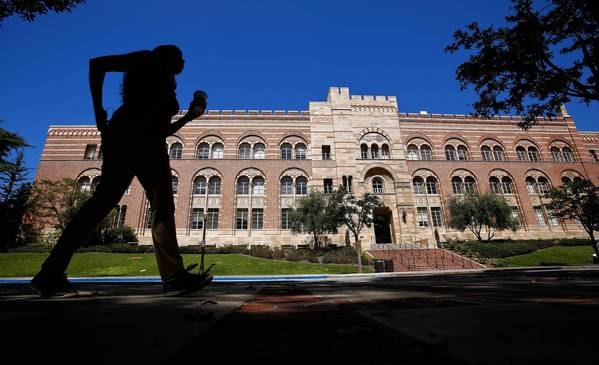Letters: Who gets into UC?

Re “UC’s diverse enrollment lags at its top schools,” July 1
As a UCLA alumnus and a former lecturer there, I know that diversity is part of what always made the University of California system excel. Moreover, fairness demands that the university’s student body reflect the general California population and the makeup of in-state applicants.
I know UC has been struggling to boost underrepresented minority enrollment ever since Proposition 209 passed in 1996. California went from one extreme — affirmative action — to the other: no action. UC deserves praise for partly mitigating affirmative action’s demise by adopting a more holistic application process, which has done much to level the playing field.
But it hasn’t done enough.
UC could do more. The U.S. Supreme Court, in sending an affirmative action case from Texas back to lower courts, has left the door open for innovative approaches that stop short of simple racial quotas. A fair compromise would be for UC to set a bare minimum for each racial group, after which an “emergency” policy would kick in.
This would probably satisfy the Supreme Court.
Jeff Drobman
Westlake Village
You refer to UC’s policy of admitting students graduating in the top 9% of their class.
At UC Santa Barbara, where I directed the School-University Partnerships, a program to increase admission of students from high schools grossly underrepresented at UC campuses, these eligible students were guaranteed admission if they lived in the region. UC Berkeley and UCLA do not have such a guarantee, which may explain why they have not matched UC Santa Barbara’s success in almost doubling diversity since 1995.
I studied the success of these students, some of whom would not otherwise have been admitted. Seventy percent of them graduated, compared to 80% of the whole student body. Would a similar policy help UC Berkeley and UCLA increase their diversity?
Thomas Ostwald
Santa Barbara
The article reports that black student enrollment at UC declined from 4.2% in 1995, the year before Proposition 209 passed, to 3.9% in 2012.
Curiously, the article doesn’t draw much attention to a startling statistic: White student enrollment dropped from 37.4% in 1995 to 23.3% in 2012. If a decline of a fraction of a percentage point among black students warrants considerable discussion, why shouldn’t there be something to say about the dramatic drop among white students?
Overall, the article was informative, particularly when it notes that minorities are more comfortable at campuses such as UC Riverside, whose student body has a large percentage of blacks and Latinos. I recently talked with a black student who, after careful consideration, chose not to attend the campus where her father is a prominent professor because there are too few blacks there.
Richard Jones
Yucaipa
Former UC Regent Ward Connerly, the article notes, argues that affirmative action caused high-achieving minority students to be viewed as if they didn’t deserve places at their universities.
The main backer of Proposition 209 might then consider that his successful campaign did little to change that suspicion. High-achieving minorities continue to be viewed as if they don’t deserve their success. For example, President Obama has faced accusations that he didn’t get good grades in college, didn’t write his own books and is ineligible to be commander in chief.
Proposition 209 is the result of what happens when you erect a good-intentioned wall in front of “underprivileged minorities” and act like there still is no discrimination in society. As in the past, it is true today that the road to hell is paved with good intentions.
Kimberlyn Hearns
San Bernardino
In calling the practice by many prestigious private universities of taking race into consideration affirmative action, you imply that the minority students they admit are selected in place of other qualified students.
What these schools do is not affirmative action. They use race as one of many factors to achieve diversity within their classes. Calling this affirmative action implies that one group is unfairly shut out in favor of another, whereas using race to achieve one element of diversity isn’t unfair.
For many schools, race is indeed a factor in admissions, but it is not the most important one.
Sarah Jackson
Pasadena
[Source]: LA Times


